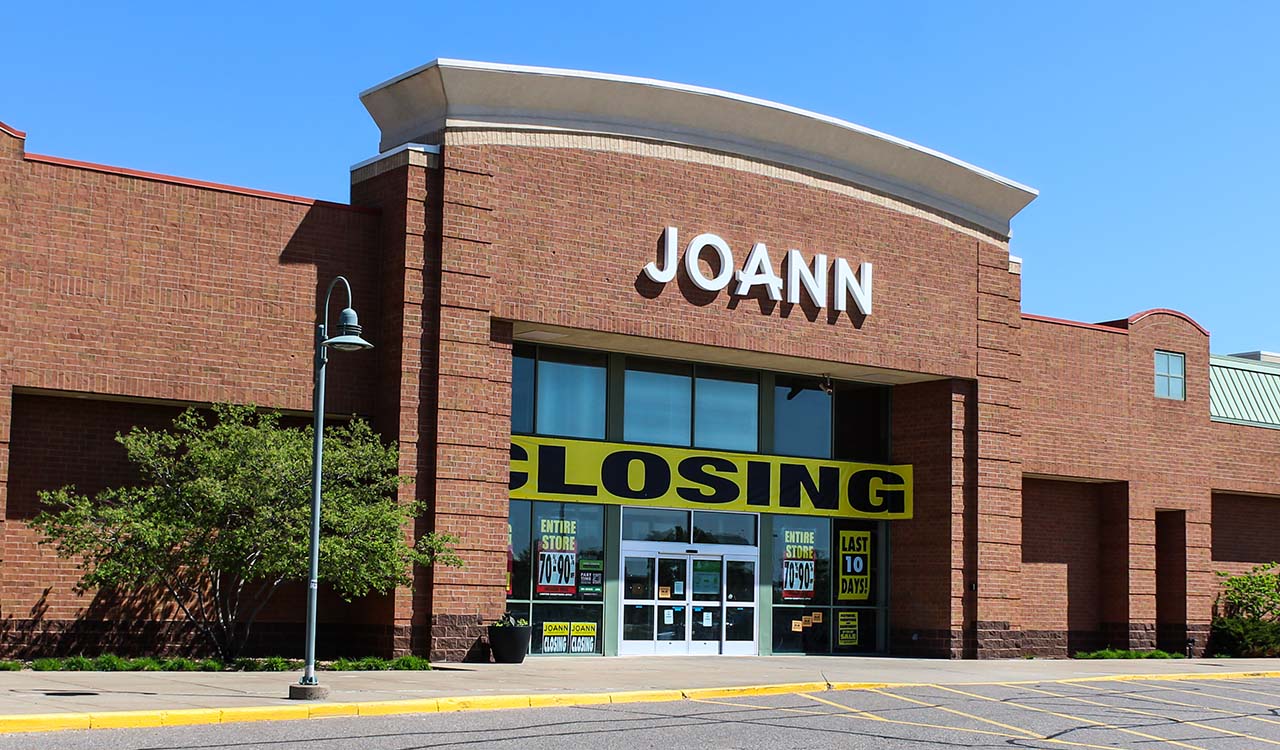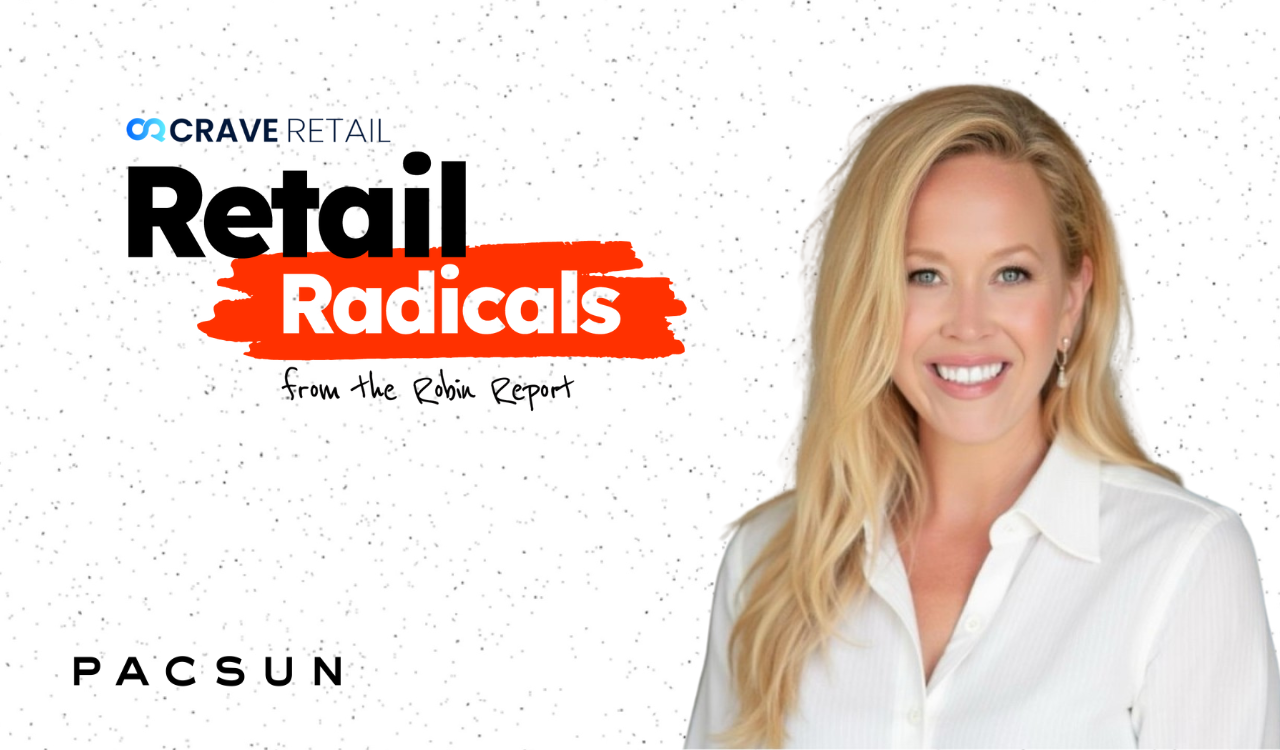Joann Fabrics and Crafts has fueled the imaginations of its loyal customers for eight decades. Regrettably, now that it has become just another moribund brand it’s sad to think that Joann’s leadership simply lacked the insight and imagination to reshape the brand to compete and prosper in the “new world” of unified commerce. But that’s what happened, along with bankruptcy.
With the advent of unified commerce, increased labor costs, and ever tighter margins, Joann wasn’t paying attention to their pain points. Joann desperately needed “fresh eyes” and out of the (big) box thinking to stay fresh, relevant and competitive.
Keeping Up With the Times
The very nature of the traditional store is being challenged by ecommerce, economic conditions, supply chains, and changing demographics. Many leading retailers have learned on the fly, updating formats and embracing new technology while still prioritizing the traditional qualities of the customer engagement that built their brands. Regrettably, Joann remained knotted and tied to outdated sales and distribution formats, exacerbated by disengaged and misdirected leadership.
A Management Migraine
At the height of the pandemic about four years ago, interest in crafting surged, then sank as stay-at-home and work-from-home orders ended. Competition and massive price cutting from rivals like Hobby Lobby and Michaels, along with ecommerce retailers affected Joann’s performance. Additionally, executives, particularly at higher levels, reportedly lacked a deep understanding of their customers’ needs and how they used Joann’s products.
CEO Wade Miquelon who joined Joann Fabrics in 2016 as Executive Vice President and Chief Financial Officer and was later appointed interim CEO in 2018, became President and CEO in February 2019. Previously, Miquelon spent 16 years with Proctor & Gamble, then a short stint at Tyson Foods, before joining Walgreens in 2008. While there, he became embroiled in a partnership with the blood-testing company Theranos and continued to support Theranos founder Elizabeth Holmes even after the Wall Street Journal exposed the company as a fraud. The Theranos chapter along with Miquelon’s lack of craft industry cred clearly questions the Joann’s board of directors decision-making acumen.
On Miquelon’s watch, despite leading Joann’s 2021 initial public offering, the company experienced notable losses between 2020 and 2023, including revenue down 22 percent, profitability down 12 percent, and a margin reduction of a staggering 1,500 basis points from a plus 5.6 percent to a minus 9.5 percentage points.
Under Miquelon’s leadership, missed revenue and adjusted forecasts became the norm. Miquelon departed Joann in May 2023, and the company filed its first bankruptcy in March 2024. It was subsequently delisted from NASDAQ in April 2024.
Dysfunction Reigns
After Miquelon’s departure, the board drew heavy criticism for not finding a replacement CEO to right the sinking ship. Instead, it appointed Chris DiTullio, Chief Customer Officer and Scott Sekella, Chief Financial Officer as co-CEO leads, a questionable move at best.
Now under private ownership, Joann secured $132M in new financing, which didn’t last long considering their burn rate at the time. Once again, Joann’s actions or inactions were quite telling.
In 2024, Standard & Poor’s (S&P) Global Ratings marked 34 bankruptcies in consumer discretionary and retail markets. The commonality shared by a majority of those bankruptcies was closing underperforming stores; an outlier, Joann’s did not follow that pattern.
Meanwhile, the company faced significant inventory problems, including overstocking and unexpected production issues, which were exacerbated by untenable store-level labor problems severely impacting both sales and financial stability.
Board Overboard and a Hail Mary
In June 2024, Joann named Michael Prendergast as its acting CEO, while DiTullio and Sekella resumed their previous roles. A new board was named “as Joann moved forward as a stronger private company,” according to press releases.
Joann’s last gasp was a “reimagined” brand campaign that repositioned JOANN as “JO-AND.” They spent Hail-Mary money on commercial spots, influencer relationships and social media campaigns, intended to inspire the next generation of creators.
Such an effort would be considered a long-range strategy, not the tactical triage Joann’s needed. As a result, Joann filed its second Chapter 11 bankruptcy in January 2025, just nine months after their first.
Labor Pains
An insider’s perspective on Joann’s unraveling was revealed by an anonymous former general manager; it was enlightening but not particularly surprising.
The habitual (overt or accidental) communication breakdown between corporate decision-makers and store-level operations clearly played a role in Joann’s undoing. We’ve seen this movie before when a legacy brand’s “culture of caring” goes by the wayside. The pain points described by the GM were plentiful:
- Minimum hour model. In recent years Joann’s stores were run on a “minimum hour model” which meant they were being run with just a two-person crew in an average store size of 22,500 square feet.
- Labor daze. Given the lack of labor, the most any store could do was cut fabric, check customers out and maybe manage to return a few bolts of fabric back onto the floor. The staff was required to skip breaks, even lunch in their attempt to keep up.
- Overstocked stores. With the weekly push of product, usually 200 boxes on average, storerooms were as much as three months backlogged on product that needed to get to the floor. Storerooms became borderline dangerous to walk through.
- Tangled web. While the website might say a particular SKU was in stock, the shorthanded staff couldn’t possibly leave the floor and wade through boxes in the storeroom to locate an item.
- Lane change. To add additional fuel to the fire, the company introduced home goods and decorations. Besides diluting the brand, it further compounded the in-store merchandising problem, adding to losses.
Failure of Imagination
In my over four decades of experience as a retail planner and store designer, I’ve had the good fortune to work with many outstanding retail leaders. One quality they all shared was the need for a regular “walking around sense” of what was happening in their stores. This was despite (good or bad) data received through divisional reporting. Even retired Costco CEO Craig Jelinek was an advocate for regularly getting out of the office and onto store floors. Apparently, this was not Joann’s leadership priority.
Beyond seeing firsthand what works and what doesn’t, in an age of unified commerce and lightspeed industry change asking questions and having “fresh eyes” on any situation is imperative to a sustaining brand.
Non-Transformative Thinking
With the advent of unified commerce, increased labor costs, and ever tighter margins, Joann wasn’t paying attention to their pain points. Joann desperately needed “fresh eyes” and out of the (big) box thinking to stay fresh, relevant and competitive.
Given the sizable square footage accommodating over 100,000 SKUs across fabrics, sewing, crafts, needle arts, home décor, paper crafts, and painting supplies, the “minimum hour model” was untenable. Legacy thinking prevailed and there appeared to be little impetus for change. Reimagining the entire fabric display methodology could have cut costs and boosted efficiency and productivity. Giving a “boot to the bolt” by introducing changeable modular fabric display boards in the stores would have significantly reduced the amount of floor space required to display the same SKUs. Nothing new here. Retail flooring stores morphed from showing stupendous stacks of carpet rolls to displaying small samples a half-century ago.
The new display methodology (possibly augmented by take-home swatches) would have trimmed store sizes without reducing variety. More importantly, it would have freed sales associates to better serve customers. Further, removing the bulky bolts from store floors would improve site lines, resulting in a more manageable, customer-friendly environment.
AI and Automation
Jettisoning fabric bolts from stores into small regional satellite fulfillment centers would have facilitated a more automated and accurate “cut to quantity” order processing. Eliminating duplicate product SKUs from multiple area stores and consolidating the stock into these centers would have significantly trimmed inventory and expedited processing while providing the customer “store-to-door” same-day delivery.
Satellite processing would cut down on waste while improving inventory control and margins. Also, piggybacking AI-enabled data collection further up the food chain would provide more personalization. It also opens the door to the new generation of “agentic AI” further cementing loyalty and improving customer lifetime value.
Loss of Community and Connections
There has been an overwhelming customer outcry by the sewing and crafting community since the Joann liquidation announcement. In many ways, it has been perceived as more consequential, even traumatic, than just another well-known brand being lost.
For the legions of sewers, creators and makers losing Joann’s meant losing a social network. Loyal customers relished coming together for in-store events and sewing classes as well as connecting and proudly sharing their latest handiwork across social media.
That kind of brand equity took years if not generations to build. It took a relatively short amount of time for the short-term thinking and nearsighted management to rip up that precious fabric and destroy generations of loyalty and equity.




